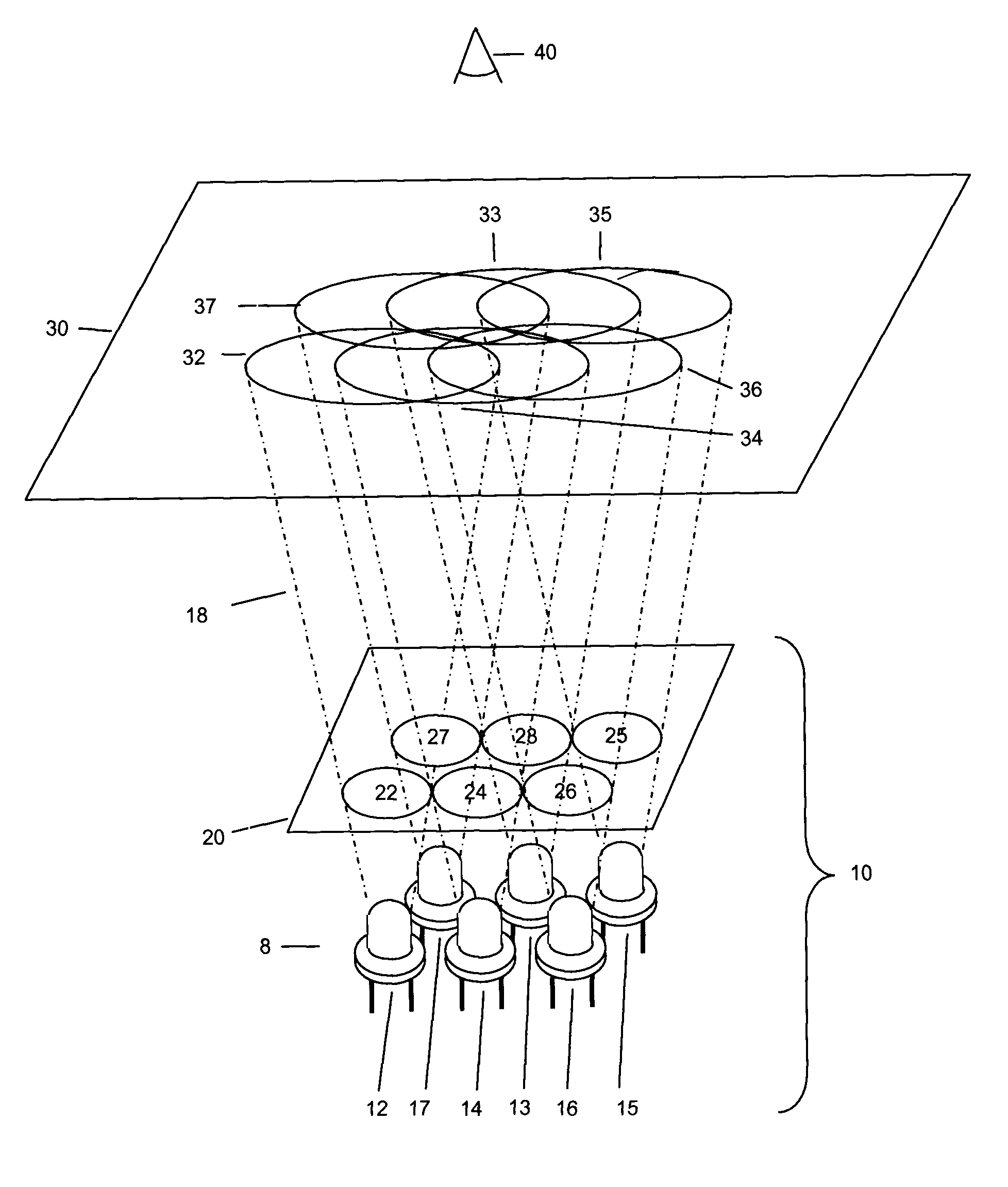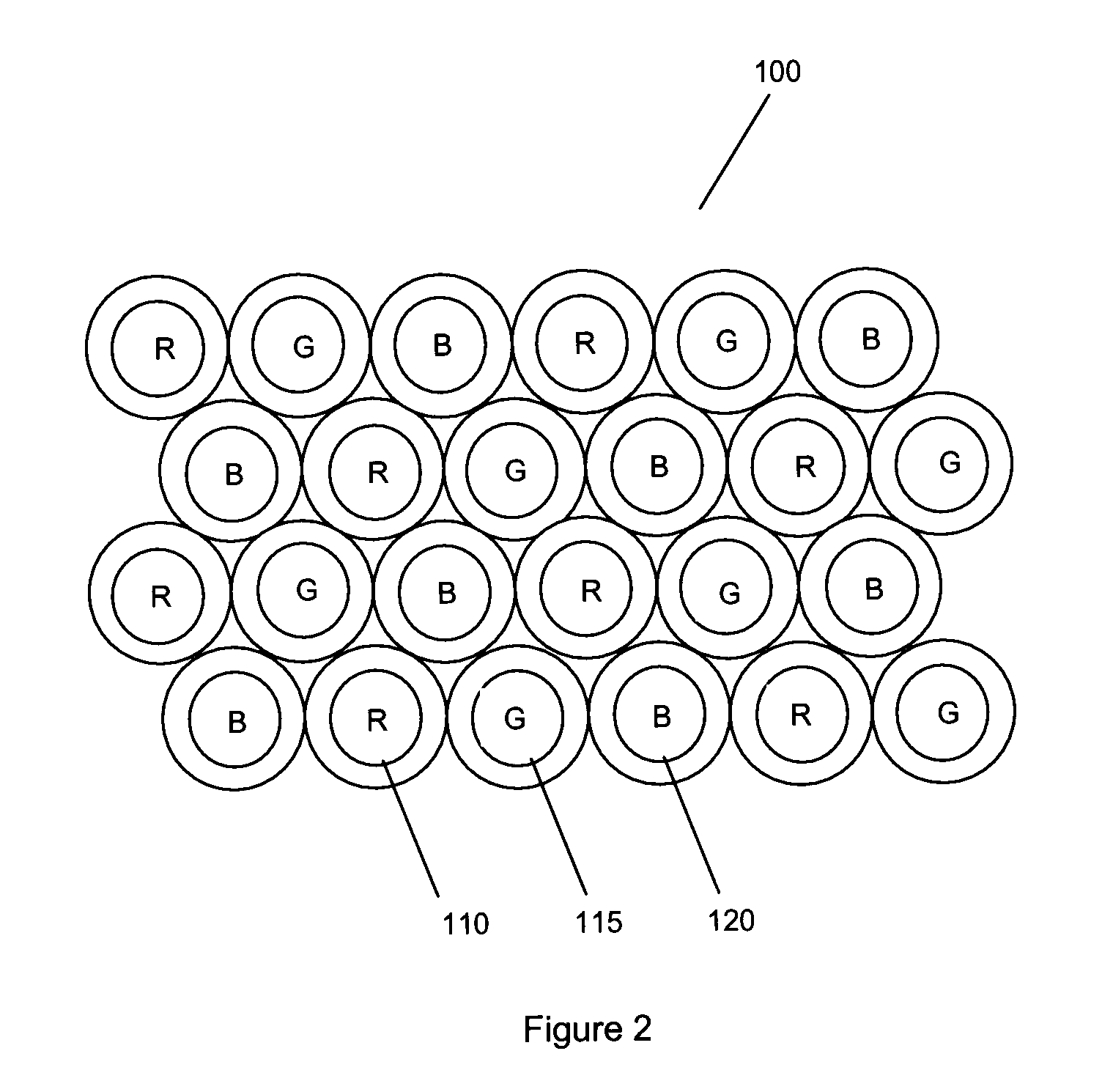Light emitting diode illumination display
a light-emitting diode and illumination display technology, applied in the field of display systems, can solve the problems of high total drive current, add to the overall system complexity, and reduce the overall system complexity, and achieve the effect of preventing substantial blurring of the imag
- Summary
- Abstract
- Description
- Claims
- Application Information
AI Technical Summary
Benefits of technology
Problems solved by technology
Method used
Image
Examples
examples
[0076]A display was constructed using an array of LED modules to illustrate an embodiment of the invention. FIG. 8(a) shows a schematic of a single LED module 300, without the LC modulator, in which twenty red 305, green 310 and blue 315 LEDs are contained. The LEDs are splayed both vertically and horizontally to allow LC modulators used in conjunction with the LED modules to be spaced apart. As shown in FIGS. 8(b) and 8(c), the maximum vertical splay is 12 degrees, while the maximum horizontal splay is 8 degrees. This splay allows the active areas of individual LC light modulators to be spaced approximately 12 mm apart in one dimension (the vertical dimension, as shown in the Figure) and 8 mm apart an another dimension (the horizontal dimension), which was a format compatible with the LCD selected for this specific design. FIG. 8(d) provides an isometric view of the LED array portion of the module, in which the open circles 320 represent the light cones produced by the red LEDs at ...
PUM
 Login to View More
Login to View More Abstract
Description
Claims
Application Information
 Login to View More
Login to View More - R&D
- Intellectual Property
- Life Sciences
- Materials
- Tech Scout
- Unparalleled Data Quality
- Higher Quality Content
- 60% Fewer Hallucinations
Browse by: Latest US Patents, China's latest patents, Technical Efficacy Thesaurus, Application Domain, Technology Topic, Popular Technical Reports.
© 2025 PatSnap. All rights reserved.Legal|Privacy policy|Modern Slavery Act Transparency Statement|Sitemap|About US| Contact US: help@patsnap.com



